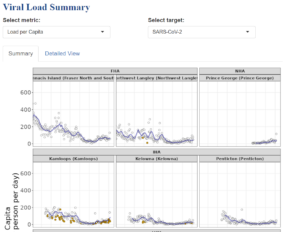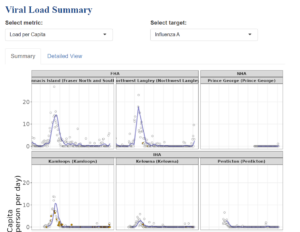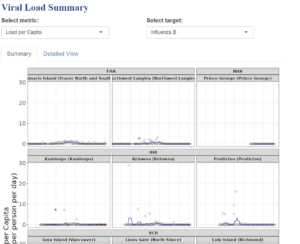By: Michelle Young, Opinions Editor
BC public health has made it too confusing to keep up on COVID-19 information. With the government changing information about COVID-19 data and obscuring data collection, knowingly downplaying risks about transmission, and overall unclear messaging, it’s no wonder people are misinformed.
It is difficult to have a sense of the current pandemic when deaths are undercounted and reinfections aren’t counted at all, as reported by CBC. Cases are generally underreported. According to CBC, BC doesn’t want to declare hospital outbreaks due to “negative connotations.”
This doesn’t mean we should all be forever doomed to ignorance. Just as it’s important to stay informed on climate change, Indigenous sovereignty, and 2SLGBTQIA+ rights — COVID-19 is a disability justice issue that is deeply intersectional. There are steps we can take to improve our understanding of COVID-19.
What We Already Know
Our understanding of COVID-19 should build on already-established information:
- COVID-19 is airborne
- It is neither mild nor seasonal, and can cause serious, long-term effects, also known as Long COVID
- Previous restrictions and lack of viral exposure do not weaken our immune systems, while COVID-19 infections can cause immune dysregulation
- Vaccines alone do not provide sufficient protection against infection or Long COVID
- Anyone can be affected by Long COVID regardless of age, current health, vaccination status, and whether or not their initial infection was mild
- The risk of Long COVID increases with each infection
- Mitigation efforts like masks and ventilation work best when used together, rather than relying solely on one precaution
Being mindful about these basic principles can help you stay informed and identify which claims are not based on evidence. You can find a list of common COVID-19 myths, and why they’re incorrect, on The Peak’s website.
Wastewater Data
Wastewater data is collected both provincially and nationally. It tests “wastewater samples for respiratory viruses,” such as COVID-19, RSV (respiratory syncytial virus), and the flu. Wastewater is essentially sewage water that comes from homes and businesses. This data “can help determine if COVID-19 is increasing or decreasing in a community and provides information on the variants circulating.”
The national website is easier to navigate, as it provides key updates listing how many collection sites show an increase or decrease in COVID-19. As of November 24, it reports 27% of sites are experiencing an increase in COVID-19 cases, 53% of sites show no change (this comes after an increase of 40% from November 17), and 19% of sites show a decrease. Overall, “62 sites currently submit sewage samples for processing” which represents about half of Canadians.
The national website provides a variety of data on different collection sites. However, when you look closely, you will notice the Y-axis scale changing in each graph, which distorts how we view risk. For example, on the national databoard, under “all time,” Vancouver Lulu Island appears to have significantly lower rates of COVID-19, compared to Vancouver Lions Gate. However, Lulu Island’s Y-axis first point of reference starts at 500, going up to 1,500 copies/mL. Conversely, Lion’s Gate’s Y-axis starts from 100 and only reaches 400 copies/mL.

Based on visual analysis alone, it would appear that Lion’s Gate has significantly worse transmission. All of the Y-axes on these graphs are different — the way they are set-up visually gives the impression of “low” transmission. When you compare the overall viral load from 2020, you can see that there’s a general increase in COVID-19 after 2021, where such data is available.
Similarly, on the BC dashboard, the COVID-19 page starts at around 200 and goes up to 600 for viral load per capita. Visually, COVID-19 cases appear low. When compared to influenza A and B, however, their graphs have a 10-point increment, and have a maximum of 30 viral load per capita. This puts into perspective how many more people are infected with COVID-19 versus the flu — the flu is circulating far less.



It can be exhausting and time consuming to try and interpret all of this data. While wastewater data provides a fairly holistic view of cases, and is the basis for much of what informs current COVID-19 modelling, it can be difficult to navigate. Thankfully, there are other sources who use this data and turn it into information that’s easier to digest — but now you know and understand where their information comes from.
Hospitalizations
Typically, hospitalizations are still reported by major news outlets. They can provide context of how COVID-19 affects our healthcare system, and whether it’s being overwhelmed (it is, for many reasons, exacerbated by the pandemic). However, it is not sufficient to rely on this data alone. Hospitalizations typically lag behind cases, are underreported, and do not take into consideration the burden of long-term COVID-19 effects on healthcare or individuals.
Peer-reviewed Articles
Peer-reviewed sources are likely going to be much more thorough and informative on COVID-19 than an average news article. While the media should take information and present it in a digestible way, sometimes studies aren’t picked up or they are misinterpreted. For a source to be peer-reviewed, it means it has gone through an “editorial board of subject experts who review and evaluate submitted articles before accepting them for publication.”
Peer-reviewed sources include:
Remember that while it’s possible to find a source for each claim, it’s important to cross-check the validity of the claim.
For example, it is well-established that masks work. This was the case even prior to the COVID-19 pandemic, despite the unclear messaging that suggested otherwise. Commonly cited by anti-maskers, there is a study that has been misinterpreted to say they “do not work.” There will always be some random study, somewhere, that will likely contradict well-established information. The key is to read the study itself, identify what is truly being claimed, and whether there are other credible sources that can verify this claim.
Independent Sources
There are multiple sources who take information and put it into perspective as tangible information. You can follow them on social media to get updates, or browse their websites for information. This is one of the easiest ways to stay informed with all of the above as this information will appear on your newsfeed.
COVID-19 Resources Canada: made up of “a group of Canadian researchers, clinicians, and community members,” this initiative has been active since 2020 to help track COVID-19 data and address vaccine hesitancy. Collecting data on hospitalizations, ICU admissions, and wastewater data, they give estimates of how many people per province are affected, provide recommendations for action, and compare this data to “the lowest point” of the pandemic in Canada. For example, in BC, it’s estimated 1 in 32 people are infected with COVID-19, with 12 times more wastewater infections than the lowest point of the pandemic and seven times as many hospitalizations. It is recommended for everyone to wear high quality masks, such as N95s or KN95s, and avoid non-essential crowded spaces.
Protect Our Province BC: “a grassroots group of physicians, nurses, health scientists, health policy specialists and community advocates,” who aim to educate the general public about COVID-19. They host information sessions and briefings around specific COVID-19 topics, such as COVID and pregnancy, access to Paxlovid (which aids to prevent serious COVID-19 outcomes), and more. They also publish open letters in response to COVID-19 policies in BC.
DoNoHarmBC: founded in 2023 in response to the removal of mask protections in BC healthcare settings, they share informative articles and action items on BC’s pandemic response. Primarily situated on social media, you can consult their list of key facts — an open access Google document — to view information on COVID-19 and BC healthcare. You can also click into the sources listed if you’d like to verify this information!
The Tyee: A BC independent news outlet active since 2003, The Tyee has done some in-depth investigative reporting on the province’s pandemic and BC healthcare. They have covered BC’s “missing COVID-19 data,” pandemic denial, and the lack of trust in public health. They also provide continuous updates on COVID-19.
Do you still have questions?
COVID-19 Resources Canada hosts weekly sessions “focused on answering questions from the audience about COVID-19, vaccines, boosters” and more, over Zoom. They are “free and open to the Canadian public to attend. All are welcome to join regardless of their background.”





